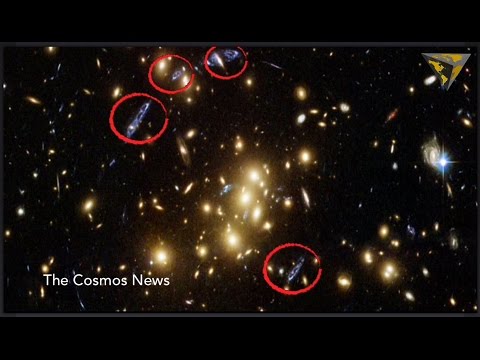Unveiling the Secrets of Galaxy Formation
Galaxies are one of the most intriguing and beautiful phenomena in the universe. They are massive collections of stars, planets, gas, and dust that are held together by gravity. But how exactly do galaxies form? This question has puzzled astronomers for centuries, and only recently have we begun to unlock the secrets of galaxy formation.
One of the key pieces of evidence that has helped us understand how galaxies form is the Cosmic Microwave Background Radiation (CMB). This radiation is a remnant of the Big Bang, the event that marked the beginning of the universe. By studying the patterns in the CMB, astronomers have been able to determine the distribution of matter in the early universe. This has led to the development of the theory of cosmic inflation, which explains how small fluctuations in the density of matter in the early universe grew into the large-scale structures we see today, including galaxies.
Another important piece of the puzzle is the study of dark matter. Dark matter is a mysterious substance that makes up about 27% of the universe, but it does not emit, absorb, or reflect light, making it invisible to telescopes. However, its presence can be inferred by its gravitational effects on visible matter. Dark matter is thought to play a key role in galaxy formation by providing the gravitational pull needed to bring together the gas and dust that eventually form stars and galaxies.
In addition to dark matter, the role of supermassive black holes at the centers of galaxies cannot be overlooked. These black holes are millions or even billions of times more massive than our sun, and they have a profound impact on the surrounding gas and stars. It is believed that supermassive black holes can influence the growth and evolution of galaxies by regulating star formation and injecting energy into the surrounding gas.
Recent advancements in observational techniques, such as the use of powerful telescopes like the Hubble Space Telescope and the Atacama Large Millimeter Array (ALMA), have allowed astronomers to study galaxies in unprecedented detail. By observing the dynamics of galaxies, the distribution of stars and gas, and the history of star formation, researchers have been able to piece together a more complete picture of how galaxies form and evolve over time.
One of the most exciting discoveries in recent years has been the existence of “galaxy mergers.” These are events in which two or more galaxies collide and eventually merge into a single, larger galaxy. Galaxy mergers are thought to be a common occurrence in the universe and can have a dramatic impact on the shape and structure of galaxies. Studying these events can provide valuable insights into the processes that drive galaxy formation and evolution.
In conclusion, the study of galaxy formation is a complex and ongoing field of research that continues to yield new insights into the nature of the universe. By combining observations from powerful telescopes with theoretical models and simulations, astronomers are slowly unraveling the mysteries of how galaxies form and evolve. As our understanding of galaxy formation grows, so too does our appreciation for the beauty and complexity of the universe.













